Continuing our look at one of the best Star Trek shows Star Trek: Deep Space Nine (DS9), there are more reasons why the show stood out from the other Trek spinoffs. To start let’s look at the main character Benjamin Sisko (Avery Brooks).
The Sisko
While seeming distant from his officers, Sisko was a very passionate man with an affinity for cooking. He was one of the most dimensional Trek captains ever shown and portrayed. At the start of the series, Sisko was a very troubled man and for good reason. His suffering was one of the best plot lines in the series pilot “Emissary”. A flashback prologue showed that while posted on a ship that tried to fight an invading Borg cube during the Star Trek: Next Generation episode “The Best Of Both Worlds, Part II” (the scene was from the Battle of Wolf 359, which took place offscreen in that episode), Sisko’s wife died in the futile battle. On an escape pod with his injured son, he watched helplessly as his ship exploded with his wife’s body still on it.
Angry, bitter and directionless, Sisko was assigned years later to command the Cardasssian-built space station Deep Space Nine orbiting the ravaged planet Bajor. His duty was to help Bajor get ready for admission into the Federation via rebuilding efforts. But still consumed by his wife’s death, Sisko considered leaving Starfleet before discovering a stable wormhole near Bajor and DS9.
What followed were a series of brilliantly shot scenes that represented the spirit of Star Trek in terms of meeting new life and mutual learning. Inside the wormhole, he encountered the “Prophets”, non-corporeal aliens who took the forms of people he knew–including his dead wife, in surreal, dream-like sequences. Every time a different person would speak, the scene would abruptly jumped to another time and location. For example, if a “Prophet” in the form of his first officer Kira Nerys (Nana Visitor) at the station had a question, then she would be answered by a “Prophet” in the form of Locutus (Patrick Stewart) during the Battle of Wolf 359. They didn’t understand the linear nature of time and Sisko had to find a way to explain the concept. Sisko tried to use baseball to explain not just the cause-and-effect nature of time but the nature of human existence. After his explanation, the aliens pointed out to “The Sisko” (as they later called him) that if time was linear why was his mind occupied with his wife’s death? The station commander quietly realized that he was trapped by his past because of his grief and needed to move on.
The Bajorans looked upon Sisko as a religious figure because of his discovery and this made him uncomfortable. However, he took his role seriously of defending the Bajorans and helping them to rebuild their civilization after the Cardassian occupation.
His greatest tests came after the malevolent Dominion arrived from the other side of the wormhole. He wound up becoming a brilliant war-time leader in what turned out to be a critical post and thwarted the Dominion’s plans to conquer the Federation. During this crisis, he had to find time to be a single father to his son Jake (Cirroc Lofton), act responsibly as a religious figure and maintain relations with the mysterious “Prophets” and other aliens. By the series end (“What You Leave Behind”) Sisko has a final confrontation with his enemies and discovers his ultimate fate with the “Prophets”.
Secondary Lineup
The show had a rich roster of characters who were well written and acted. They helped drive the show and made viewers care about what was going on. One advantage DS9 had over its Trek cousins were the secondary characters. Most of them were as well developed as the main ones and could’ve conceivably carried on as replacements for the main characters, they were that good. There was Nog (Aron Eisenberg), Quark’s (Armin Shimmerman) nephew. At first he was written to be a comedic foil and companion to Jake, but over time, the diminutive Ferengi expressed a desire to better his lot in life and joined Starfleet, becoming the first Ferengi to do so. Nog quickly proved himself and became known for his competence and bravery. Another Ferengi of note was Nog’s father Rom (Max Grodenchik), a seemingly dim-witted and good-natured soul who worked as Quark’s hapless assistant. While he was usually comedic relief, over time, he too wanted to better himself but was only lacking confidence. Eventually he joined the station’s engineering crew, married the very attractive Bajoran waitress Leeta (Chase Masterson), worked as a Federation spy and even wound up becoming the Grand Nagus –the leader of the Ferengi and began to bring about progressive reforms.
DS9 had complex and fascinating alien races like the Ferengi, the Bajorans and even the Klingons. But one of the most multifaceted aliens were the Cardasssians. First up was Garak (Andrew J. Robinson), an enigmatic exile who was introduced early in the show’s run. Demonstrating a fascination towards Dr. Bashir (Alexander Siddig), Garak reveled in being a mysterious source of help and information. Over time, it was revealed that he once worked for Cardassian intelligence  but fell out of favor. As a former spy, Garak was quite deadly, he even carried out Sisko’s dirty work in the episode “In The Pale Moonlight” but by the show’s end became a liberator and helped to defeat the Dominion occupiers of his home planet. The other prominent Cardassian was Dukat (Marc Alaimo), the show’s arch nemesis. Originally the commanding officer of DS9 when it was in Cardassian hands, Dukat was a brutal dictator who took joy in terrorizing Bajorans. Dukat appeared several times as a menacing figure but apparently turned over a new leaf when the Klingons went to war with the Cardassians in the fourth season. He became a guerilla fighter and seemed regretful about his past, but the humiliation his people suffered under the Klingons was too much for him. Making a Faustian bargain, Dukat allied himself with the Dominion and allowed them to take control of the Cardassian Union (“By Inferno’s Light”). In the end all he wanted (as he ranted in the episode “Waltz”) was to be adored and respected by those he considered inferior to him. That included the Bajorans and Ben Sisko.
but fell out of favor. As a former spy, Garak was quite deadly, he even carried out Sisko’s dirty work in the episode “In The Pale Moonlight” but by the show’s end became a liberator and helped to defeat the Dominion occupiers of his home planet. The other prominent Cardassian was Dukat (Marc Alaimo), the show’s arch nemesis. Originally the commanding officer of DS9 when it was in Cardassian hands, Dukat was a brutal dictator who took joy in terrorizing Bajorans. Dukat appeared several times as a menacing figure but apparently turned over a new leaf when the Klingons went to war with the Cardassians in the fourth season. He became a guerilla fighter and seemed regretful about his past, but the humiliation his people suffered under the Klingons was too much for him. Making a Faustian bargain, Dukat allied himself with the Dominion and allowed them to take control of the Cardassian Union (“By Inferno’s Light”). In the end all he wanted (as he ranted in the episode “Waltz”) was to be adored and respected by those he considered inferior to him. That included the Bajorans and Ben Sisko.
Enter The Dominion
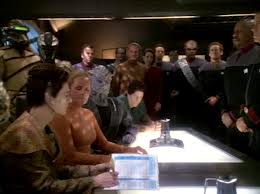 The Dominion themselves were one of Star Trek’s most noteworthy and menacing aliens. The best way to envision them would be as the Anti-Federation. As the super power in the Gamma Quadrant (the far-off region of space on the other side of the wormhole), the Dominion subjugated several races in that area of space and consisted of three races. There were the reptilian foot soldiers, the brutal Jem’Hadar, who were bred solely for combat. The administrators were the Vorta. Appearing human except for humongous wraparound ears, the Vorta were smarmy, sardonic bureaucrats who were slimily condescending. Finally, the Founders were the leaders of the Dominion and consisted of shape shifting Changelings, the same alien race as Odo (Rene Auberjonois).
The Dominion themselves were one of Star Trek’s most noteworthy and menacing aliens. The best way to envision them would be as the Anti-Federation. As the super power in the Gamma Quadrant (the far-off region of space on the other side of the wormhole), the Dominion subjugated several races in that area of space and consisted of three races. There were the reptilian foot soldiers, the brutal Jem’Hadar, who were bred solely for combat. The administrators were the Vorta. Appearing human except for humongous wraparound ears, the Vorta were smarmy, sardonic bureaucrats who were slimily condescending. Finally, the Founders were the leaders of the Dominion and consisted of shape shifting Changelings, the same alien race as Odo (Rene Auberjonois).
Part of Security Chief Odo’s journey in the show was to discover his origins and he received a rude shock when he learned that his people were the power behind the Dominion (“The Search, Part II”). Once peaceful and curious, the Changelings had been persecuted by “Solids” for the longest time and finally the Changeling race were able to build an empire that conquered the Gamma Quadrant. They saw all “Solids” as the enemy and wanted nothing more than to conquer other powers before they became a threat. DS9 did a superb job in slowly introducing the Dominion and hinting at the nature of their threat. They were first mentioned in second season episodes when the Federation began exploring the Gamma Quadrant.
After their dramatic debut in the second-season finale “The Jem’Hadar” (where a handful of small Dominion fighter ships viciously destroyed a Galaxy-class starship), the Federation learned that the Changelings had been infiltrating the Alpha Quadrant super powers like the Klingons and even the Federation. The disguised aliens created chaotic situations in order to destabilize the Alpha Quadrant and it largely worked. The Klingons and the Federation ended their treaty (“The Way Of The Warrior”), there was a nearly successful coup d’état in Starfleet (“Homefront” and “Paradise Lost”) and even one of the main characters was revealed to have been a Changeling who took over that identity unbeknownst to everyone. That revelation in the episode “In Purgatory’s Shadow” was a big WTF moment for the show.
Star Trek War
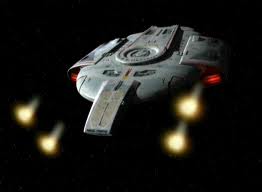 One of the most significant events in Star Trek: Deep Space Nine was the Dominion War. It was the first time in any Trek show that a full-scale, ongoing war was presented. It wasn’t some obscure historical event nor was it just a series of one-on-one ship skirmishes. DS9 presented the cold, ugly and brutal face of war and what fans saw was that as with real-life war, conflicts in the future are violent and demoralizing. Standout episodes like “Nor The Battle To The Strong” “Valiant”, “Call To Arms”, “Behind The Lines”, “Sacrifice Of Angels” and “The Siege Of AR-558” showed that the good guys don’t always win and if so it’s at a high cost with emotional scarring , violent deaths, and maiming. Nog was one of the casualties of war. He was a brave and resourceful soldier in many episodes but lost his leg in “The Siege Of AR 558”. Even though his limb was replaced, Nog suffered from PTSD, the major plot in the episode “It’s Only A Paper Moon”.
One of the most significant events in Star Trek: Deep Space Nine was the Dominion War. It was the first time in any Trek show that a full-scale, ongoing war was presented. It wasn’t some obscure historical event nor was it just a series of one-on-one ship skirmishes. DS9 presented the cold, ugly and brutal face of war and what fans saw was that as with real-life war, conflicts in the future are violent and demoralizing. Standout episodes like “Nor The Battle To The Strong” “Valiant”, “Call To Arms”, “Behind The Lines”, “Sacrifice Of Angels” and “The Siege Of AR-558” showed that the good guys don’t always win and if so it’s at a high cost with emotional scarring , violent deaths, and maiming. Nog was one of the casualties of war. He was a brave and resourceful soldier in many episodes but lost his leg in “The Siege Of AR 558”. Even though his limb was replaced, Nog suffered from PTSD, the major plot in the episode “It’s Only A Paper Moon”.
On the visual side, many of these war-based episodes showcased astonishing special effects that featured entire space armadas battling each other in pyrotechnic glory. Some episodes like “Sacrifice Of Angels” had eye-popping scenes of the Defiant (the small but powerful escort ship commanded by Sisko) and Federation starships battling Dominion and Cardassian ships which rivaled Star Wars. They put other Trek shows to shame with the stunning, epic scope of the battles. Again this was something rarely shown on Star Trek shows that often featured solitary battles between two ships and it made DS9 that much more memorable.
Far Beyond The Ordinary Plots
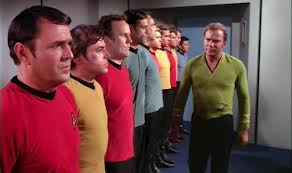 But Star Trek: Deep Space Nine wasn’t always about gritty war. It had its share of humorous and socially relevant episodes. Take “Little Green Men” for example. In the episode Quark, Rom and Nog wind up in Roswell in 1947 and turn out to have been the basis for the modern UFO urban legend. “In the Cards” had Jake and Nog running around the station carrying out more and more complex favors for others in order to obtain a rare baseball card. There was even a tongue-in-cheek nod to Seven Samurai with “the Magnificent Ferengi” where Quark and his fellow Ferengi form a team to rescue his mother from Dominion captors. One can’t forget “Trials and Tribble-ations” the tribute to the original Star Trek, which had the DS9 characters meeting the original Enterprise crew during the classic episode “The Trouble With The Tribbles”. What happened was that Sisko and company time traveled to Captain Kirk’s era and uncovered a plot to assassinate the famous starship captain. Thus, they infiltrated the original Enterprise crew by wearing those distinctive uniforms from that era and interacted with the classic Trek characters. It was a hoot to see the DS9 characters being inserted into famous scenes from the episode, such as when Kirk dresses down his men for getting into a bar fight and O’Brien (Colm Meaney) and Bashir could be seen as part of that group.
But Star Trek: Deep Space Nine wasn’t always about gritty war. It had its share of humorous and socially relevant episodes. Take “Little Green Men” for example. In the episode Quark, Rom and Nog wind up in Roswell in 1947 and turn out to have been the basis for the modern UFO urban legend. “In the Cards” had Jake and Nog running around the station carrying out more and more complex favors for others in order to obtain a rare baseball card. There was even a tongue-in-cheek nod to Seven Samurai with “the Magnificent Ferengi” where Quark and his fellow Ferengi form a team to rescue his mother from Dominion captors. One can’t forget “Trials and Tribble-ations” the tribute to the original Star Trek, which had the DS9 characters meeting the original Enterprise crew during the classic episode “The Trouble With The Tribbles”. What happened was that Sisko and company time traveled to Captain Kirk’s era and uncovered a plot to assassinate the famous starship captain. Thus, they infiltrated the original Enterprise crew by wearing those distinctive uniforms from that era and interacted with the classic Trek characters. It was a hoot to see the DS9 characters being inserted into famous scenes from the episode, such as when Kirk dresses down his men for getting into a bar fight and O’Brien (Colm Meaney) and Bashir could be seen as part of that group.
Star Trek: Deep Space Nine boasted several plot points and social issues rarely covered in Star Trek. The show examined racism in the excellent episode “Far Beyond the Stars”, where Sisko somehow winds up assuming the identity of a struggling science fiction writer in 1950s New York who is unable to get a story published about a space station because its main character happened to be black. In the two parter “Past Tense” Sisko and a couple of 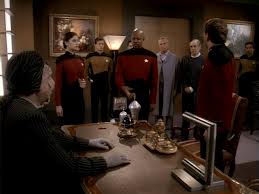 his officers are accidently trapped in the 2020s during a tense social movement called the Bell Riots, which seems like an outgrowth of the recent Occupy Movement. Oddly, the show predicted the paranoid and tense mood in the U.S. after 9/11 with the chilling episodes “Homefront” and “Paradise Lost” where chaos reigned on Earth after a Changeling terrorist attack.
his officers are accidently trapped in the 2020s during a tense social movement called the Bell Riots, which seems like an outgrowth of the recent Occupy Movement. Oddly, the show predicted the paranoid and tense mood in the U.S. after 9/11 with the chilling episodes “Homefront” and “Paradise Lost” where chaos reigned on Earth after a Changeling terrorist attack.
DS9 Today
Today, among many Trek fans, the show holds a special spot in their hearts. It harkens to a time when a fan could look forward to a exciting and thought-provoking series that touched upon many of our current social ills like terrorism and its impact on society, fighting a long, grueling war, civil right struggles and the underside of politics. Star Trek was at its best when it tackled those issues not when dealing with ridiculous scientific problems that were solved with nonsensical technobabble. It’s unfortunate that Star Trek from this time period in the 1990s is more remembered for the bland-in-comparison Star Trek: The Next Generation and Star Trek: Voyager.  Even more distressing is the fact that there probably will never be a reunion or followup to DS9 since the demand for Trek these days is focused on the original Star Trek due to its nostalgic factor. Hence the fact that the rebooted Star Trek was about Kirk and company, and its alternate timeline all but wiped out any chance to return to Deep Space Nine. Still the show had seven seasons’ worth of episodes, which provides hours of entertainment for fans. Plus, it’s an opportunity to discover the greatness of Star Trek: Deep Space Nine for anyone wanting something different.
Even more distressing is the fact that there probably will never be a reunion or followup to DS9 since the demand for Trek these days is focused on the original Star Trek due to its nostalgic factor. Hence the fact that the rebooted Star Trek was about Kirk and company, and its alternate timeline all but wiped out any chance to return to Deep Space Nine. Still the show had seven seasons’ worth of episodes, which provides hours of entertainment for fans. Plus, it’s an opportunity to discover the greatness of Star Trek: Deep Space Nine for anyone wanting something different.
José Soto


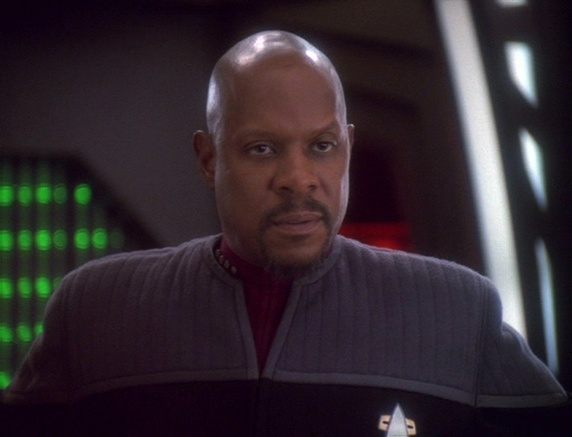

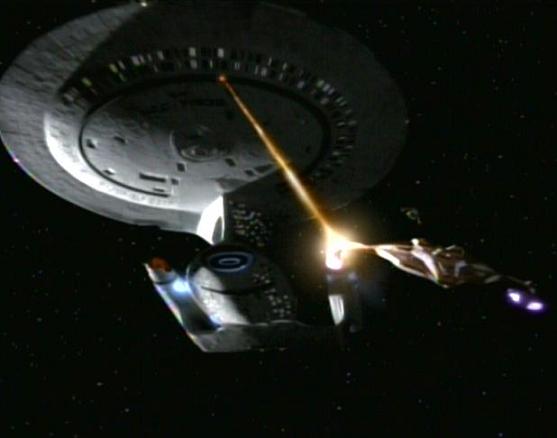

DS9 was always my favorite Trek show, too bad that they’re now concentrating on Abrams’ new alternate Trek reboot about the old cast. TNG had their films and even Janeway from Voyager appeared in one film. Why couldn’t they devote a movie to DS9, at least a cameo from someone in the cast would’ve been nice.